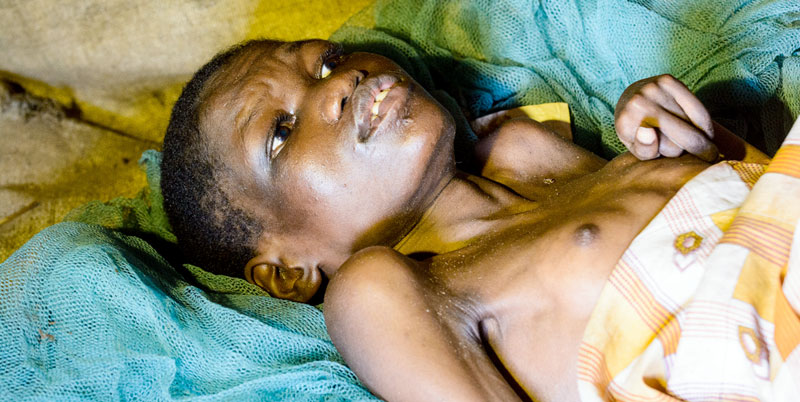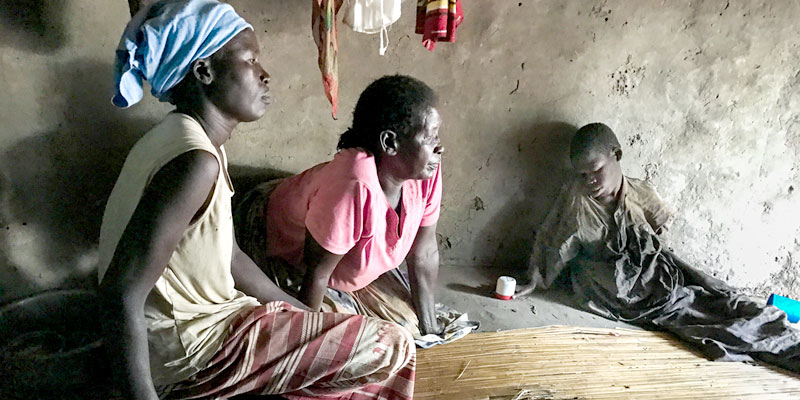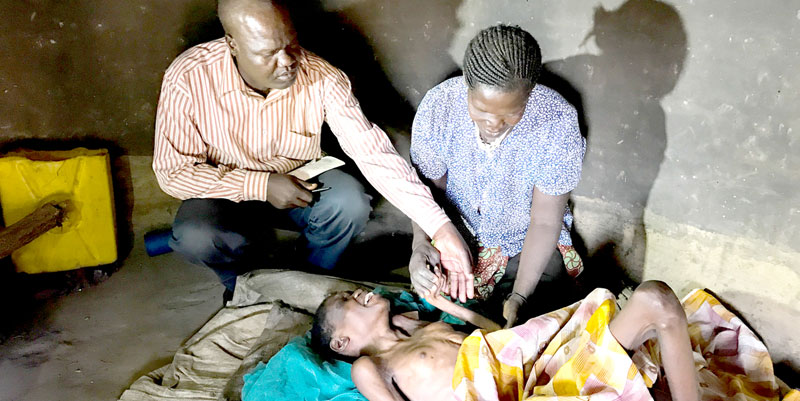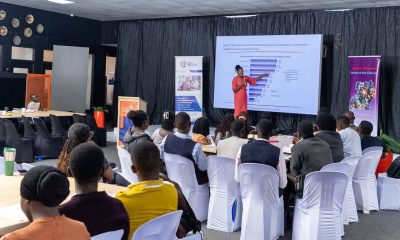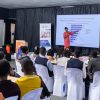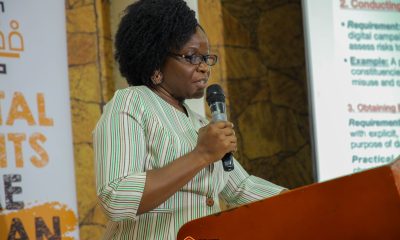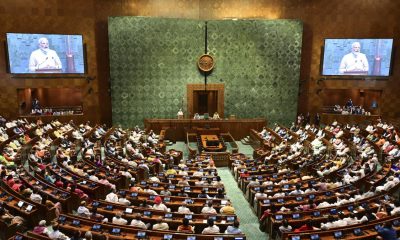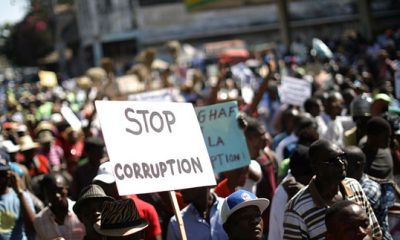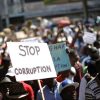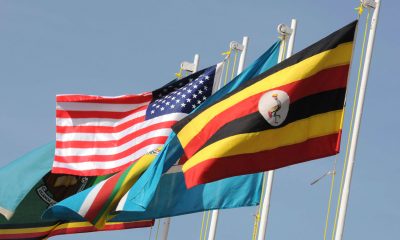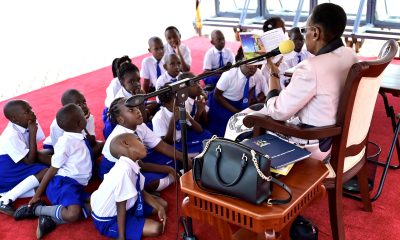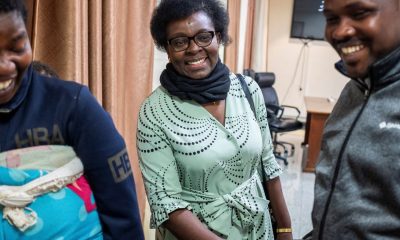Analysis
Nodding syndrome Horror: Agony of Government’s long silence
Monica Alaroker is 18 years old. Since 2006, ” a condition that weakens the neck muscles and makes the head to loll on the shoulders.
Alaroker was born normal in Ayom village, Pader district, but for the last 11 years, her family has been nursing her – with no sign of improvement. She cannot walk, talk or even eat on her own. Her hands and legs, too, have become paralyzed.
She is isolated in a small grass-thatched house. Peeking at her in that enclosure presents one with a horrifying sight. Alaroker lies helpless with no bedding except an old mosquito net that is all socked in urine. He skin is visibly covered with bed sores.
Alfred Oyaro, Alaroker’s father is clearly traumatized by the pain her daughter is going through. “My thoughts are no longer with that child; I have wasted a lot of time treating her, but there is no improvement. I don’t even know what I am treating,” said Oyaro. Esther Lanyero, Alaroker’s mother is hopeless about her daughter’s future. She says, her daughter has been a problem.
Alaroker is their second child to fall victim to the disease, whose cause has eluded experts so far. Their only son, Jimmy Okema, died of the disease a couple of years ago. With tears rolling down her cheeks, she talked of Okema falling sick, helpless in the compound before he was carried away into the house with the assumption that it was the usual seizure. However after two days, Okema was found lying dead on his bed.
For the Oyaros, since Okema’s death, life has never been the same again. Alaroker’s sickness has heavily impacted the family to the extent that it can no longer engage in farming yet it was their main source of income. “I cannot go to the farm and leave her alone because she needs my full-time attention. She has appetite for food and when hungry, she cries out loud, but sometimes I have no money to buy her food,” Lanyero said.
Lanyero attributes the scarcity of food to the prolonged drought that ravaged the region to the extent that she now goes out to people’s homes to do casual work in exchange for food to feed her daughter, and the family. Still, this is always insufficient.
Unlike Ebola, that attracted worldwide attention, support for victims of the nodding syndrome has been slow and at times non existent. Hundreds of innocent children remain neglected. For a long time, Northern Uganda has been associated with the Lord’s Resistance Army led by Joseph Kony and the hard-biting poverty caused by the war. In Uganda, the disease was first identified in 2007.
The World Health Organization says that as of 2012, more than 3000 cases of Nodding Syndrome (Onchocerciasis) have been recorded by authorities in Uganda. The disease has mostly ravaged the three districts of Pader, Kitgum and Lamwo. New cases have also been reported in Gulu, Amuru, Oyam and Lira.
According to WHO, the disease was first identified in Northern Tanzania in the 1960s, and later in the Republic of South Sudan in the 1990s.
WHO also suspects that the disease could be linked to epilepsy as most cases have been found in areas with high incidence of epilepsy. Poverty and prolonged periods of food shortages have also been a characteristic of households affected with the syndrome.
Now, it has again been hit by a devastating medical mystery, the “Nodding Syndrome”, an epileptic seizure that weakens the muscles in the head, making it fall forward thus the name; with no known cause, or cure.
The Nodding Syndrome, locally known as Luc Luc, only strikes children between the age of five to 16 years, halting their physical and mental development and stopping some children from talking. It has wrought pain, tears and agony of innocent children dying through no fault of their own.
On a bodaboda through Omoro district, this reporter went to Akoyo village in Odek sub-county to meet 17 year-old Fiona Alanyo. She does not look her age; her growth has been stunted by the nodding disease. She was seated all alone in the compound, half naked and eating raw mangoes.
Alanyo’s grandmother, Ajulina Ajok, eventually showed up. “Alanyo is here, just like you can see her; God knows what next for her but as a family we will continue to do our best,” adding that Alanyo is lucky to be on medication, but Ajok’s condition has continued to deteriorate mostly due to lack of good nutritional vis-a-vis the strong medication she is taking.
While Alanyo languished at home with her grandmother, 30 similar children now under the care of Hope for Humans, a non-governmental organization (NGO) that provides food and comfort, appeared to be doing better. Winnie Acii, a community nursing assistant working with the NGO said they helped to save one victim of the disease from near death. Acii says they met Nil Kidega, close to death in Tumangu village in Kitgum District. Unlike Alanyo, Kidega has been put on medication, monitored and given all the care and his life is out of danger now.
Hope for Humans Program Manager, Caesar Okot, said: “Caring for the victims of the nodding syndrome is very expensive because it not only involves medicines but also food supplements that are supposed to resuscitate the victims weak bodies.
“We as a center, with no consistent source of funding, depend on one sole donor, who gave up her home to support the kids. We find it very hard.”
Okot says the Government intervention is insufficient and has been mainly confined to medication, training of community health workers and monitors, as opposed to direct seed-funding in trying to cater for the daily needs of the children like feeding, which goes hand-in-hand. The President General of Democratic Party, Norbert Mao, has lashed at the Government as having not come out strongly to support the kids and their families. “We have been let down, but as local leaders we are engaging different stake-holders to see to it that the issue of kids with Nodding Syndrome is a priority.”
Besides the financial challenges, Okot stresses that the children with Nodding Syndrome face the highest level of stigma and discrimination from society. Parents continue locking their sick children in huts and sometimes chaining them. “The need to find food besides other family duties has forced many parents to do the unthinkable, tying the kids with ropes to prevent them from roaming the village as the adults go out to look for food.
The Program Manager in the Ministry of Health’s Uganda National Expanded Programme on Immunization, Dr. Bernard Toliva Opar, who also doubles as the Chairman, National Task Force on Nodding Syndrome, told this reporter that the Government has not abandoned the suffering children but have supplied medicine, food supplements and training community members and health workers to deal with the condition.
He added that the government has also been involved in efforts to spray areas around river banks which are suspected to habour deadly house flies that is presumed to be the cause of the said deadly disease.
As years go by, the post-conflict recovery process of Northern Uganda seems far from reality, as several cross-cutting issues continue to emerge. Locals continue to wonder if God has truly forgotten them. The parents of the ailing children continue to pray for cure to be found.”
Comments



